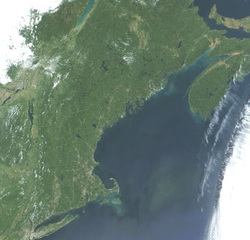Geographic Inquiry

- Holt-Jensen, 1980 - definition of geography
Introduction
What is Geography?
Geography is the spatial study of the Earth; it isn’t just states and capitals or mountains and rivers. It isn’t just about where things are; it has to do with why they are located in that spot as opposed to somewhere else. It has to do with natural resources and movement of people, animals, and goods around the planet. It has to do with cultural differences between people and the boundaries that unite and divide these groups of people. If you can use a map to study a topic or learn more about it, then it is geographic.
How often do you use Geography?
General Inquiry Process Steps
- Build a foundation or draw on prior knowledge
- Formulate Question
- Investigate - Research - Cite Sources
- Revise Question (if needed)
- Investigate - Research - Cite Sources
- Formulate answer
- Ask follow up questions expand inquiry – if time allows
- Discuss- Share-Reflect
What is a Probing Question?
- A single number, word, or statement can’t answer them
- The answer can’t be copied, but rather must be formulated and constructed from research notes
- The entire answer often can’t be found in just one place
- Often begin with wording such as “how” “why” or “to what extent”
- Often lead to additional questions
- Why are many state capitals not the most well known city or largest city in the state?
- To what extent are the United States and Canada cooperating to manage the great lakes?
- How is water managed in the California desert so that farmers will be successful?
Grade Expectations
H&SS1 Students initiate an inquiry
H&SS7 Students communicate findings
H&SS11 Students interpret geography and solve geographic problems
Directions
Step 1 - Question:
Draft a probing question to which you would like to know the answer and share with teacher. We will refine the question if needed before moving on to research. Use the worksheet for initiating inquiry
Step 2 - Identify where you may find information for your answer
Numerous maps and atlases are available in the classroom. The GEMS Learning Center contains many books and references that may contain information that will help you answer your question. Online sources will also be valuable but beware of getting bogged down in too much information.
You should also know that it is unlikely you will find the complete answer in a single place where you can simply copy it down. Formulating the answer will take a little detective work, thinking, and the use of several sources. Your job in this stage is to take notes and collect facts that could be useful to your question.
You are responsible for citing all sources used. You may use either MLA or APA format. Citation Machine makes this easy. If you have questions ask for assistance.
Step 3 - Formulate your answer
Put your facts together to answer the question. If you aren’t 100% sure of the answer that is OK, draw the most likely conclusion given the facts. Use these facts to support your answer when you explain your findings to others.
If you have tried to find information that will answer your question and are unable to come to conclusion with the notes that you have taken, organize your notes into the most interesting facts and determine what questions may have been answered by those facts.
Step 4 – Create a product to demonstrate your understanding of the answer
Use a small posterboard provided by the teacher. This could be a map, chart, graph, vocabulary list, poem, picture, graphic organizer, etc. Anything that will help you explain to others what you have found.
Step 5 - Discuss findings and research experience within a small group discussion.
Resources:
Here are a few links to get you started, but don't forget the great print resources including maps, atlases, class text, and reference books.
EBSCO, World Book Online and others located off the GEMS Library Web Page
http://www.infoplease.com/
Google Maps
http://www.about.com
http://www.howstuffworks.com/
http://geology.com/
http://www.enchantedlearning.com/
http://nationalmap.gov/
http://memory.loc.gov/ammem/index.html
http://www.census.gov/
http://www.fedstats.gov/mapstats/thememaps/
Remember to cite all sources! Here is a link directly to Citation Machine
Assessment:
|
|
Research |
Product |
Discussion/Sharing |
Use of Time |
Accomplished
|
Initiates
high-level inquiry by formulating probing questions, identifying the needed
information, locating, examining, and analyzing various resources, and creating
complete source citations |
Demonstrates
thorough |
Well
prepared and demonstrates a strong desire to share learning with others Detail
on Discussion Rubric |
All
time used wisely, extra time is used to extend and expand inquiry into
additional areas |
|
Proficient |
Initiates inquiry, by formulating probing questions, identifying the needed information, locating and examining resources, and creating complete source citations |
Demonstrates understanding of topic, the ability to make connections, and serves as an meaningful, high quality, aid to share learning |
Prepared
and demonstrates a desire to share learning with others |
All time used wisely |
|
Amateur |
Initiates
inquiry by formulating probing questions, locating, and using resources, and
creating source citations |
Demonstrates
new learning, the ability to make basic connections, and serves as an aid to
share new learning |
Not
fully prepared, shares some learning with others |
Most
time used wisely |
|
Beginner |
Initiates
basic inquiry identifies, uses, and cites sources with assistance |
Demonstrates
basic learning |
Unprepared,
attempts to share learning with others Detail
on Discussion Rubric |
Some
time used wisely |